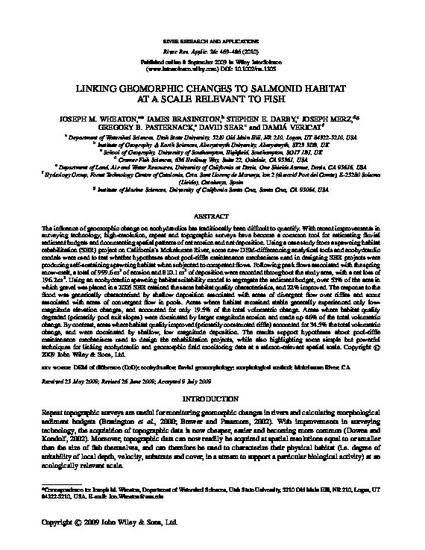
Article
Linking geomorphic changes to salmonid habitat at a scale relevant to fish
River Research and Applications
(2010)
Abstract
The influence of geomorphic change on ecohydraulics has traditionally been difficult to quantify. With recent improvements in surveying technology, high-resolution, repeat and topographic surveys have become a common tool for estimating fluvial sediment budgets and documenting spatial patterns of net erosion and net deposition. Using a case study from a spawning habitat rehabilitation (SHR) project on California's Mokelumne River, some new DEM-differencing analytical tools and ecohydraulic models were used to test whether hypotheses about pool-riffle maintenance mechanisms used in designing SHR projects were producing self-sustaining spawning habitat when subjected to competent flows. Following peak flows associated with the spring snow-melt, a total of 999.6 m3 of erosion and 810.1 m3 of deposition were recorded throughout the study area, with a net loss of 196.2 m3. Using an ecohydraulic spawning habitat suitability model to segregate the sediment budget, over 53% of the area in which gravel was placed in a 2005 SHR retained the same habitat quality characteristics, and 22% improved...
Keywords
- DEM of difference (DoD);ecohydraulics;fluvial geomorphology;morphological method;Mokelumne River;CA
Disciplines
Publication Date
May, 2010
DOI
DOI: 10.1002/rra.1305
Citation Information
2010.
Wheaton
JM,
Brasington
J,
Darby
SE†,
Merz
JE,
Pasternack
GB†,
Sear
DA†
and
Vericat
D‡.
Linking
Geomorphic
Changes
to
Salmonid
Habitat
at
a
Scale
Relevant
to
Fish.
River
Research
and
Applications.
25:
469-‐486.
DOI:
10.1002/rra.1305.
